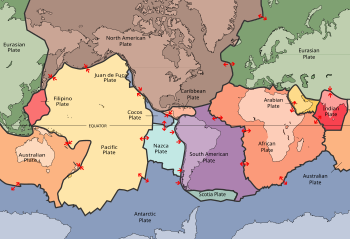An atmosphere is
a layer of gases that
may surround a material body of sufficient mass, and that is held in
place by the gravity of the body. An atmosphere may be
retained for a longer duration, if the gravity is high and the atmosphere's
temperature is low. Some planets consist mainly of various gases, but
only their outer layer is their atmosphere.
The Troposphere
The troposphere is
where all weather takes place; it is the region of rising and falling packets
of air. The air pressure at the top of the troposphere is only 10% of that at
sea level (0.1 atmospheres). There is a thin buffer zone between the
troposphere and the next layer called the tropopause.
The Stratosphere and Ozone Layer
Above the troposphere is
the stratosphere, where air flow is mostly horizontal. The thin ozone layer in the upper stratosphere has a high
concentration of ozone, a particularly reactive form of oxygen. This layer is
primarily responsible for absorbing the ultraviolet radiation from the Sun. The
formation of this layer is a delicate matter, since only when oxygen is
produced in the atmosphere can an ozone layer form and prevent an intense flux
of ultraviolet radiation from reaching the surface, where it is quite hazardous
to the evolution of life. There is considerable recent concern that manmade
flourocarbon compounds may be depleting the ozone layer, with dire future
consequences for life on the Earth.
The Mesosphere and Ionosphere
Above
the stratosphere is the mesosphere and above that is the ionosphere (or thermosphere), where many
atoms are ionized (have gained or lost electrons so they have a net electrical
charge). The ionosphere is very thin, but it is where aurora take place, and is
also responsible for absorbing the most energetic photons from the Sun, and for
reflecting radio waves, thereby making long-distance radio communication
possible.
reference: http://en.wikipedia.org/wiki/Atmosphere




